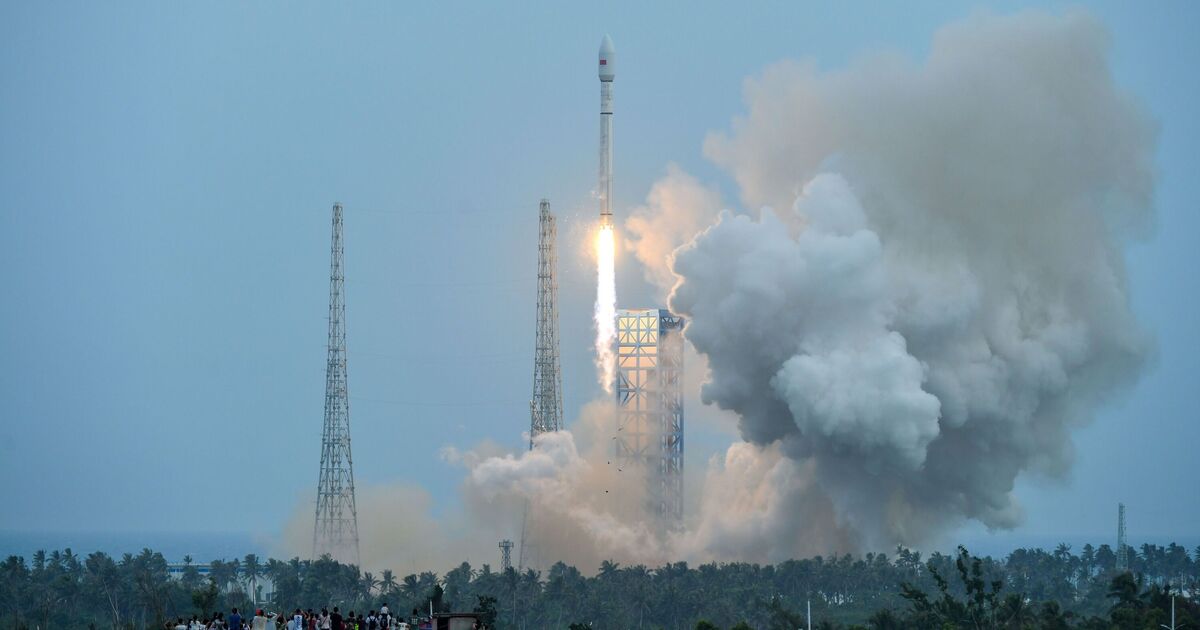Video footage shows debris falling from the sky after China launched a group of internet satellites into space. The Long March-12 rocket took off from the Hainan commercial spacecraft launch site in the southern island province of Hainan at 6.21pm on Monday.
The successful launch of the payloads is the seventh launch of low-orbit internet satellites into space and is the 587th mission of the Long March series carrier rockets. Footage shared online shows fiery debris making its way back to Earth before burning up in the atmosphere. In an advisory notice published in the wake of the launch The Philippine Space Agency said: “Expected debris from the rocket launch was projected to have fallen within the identified drop zones approximately 21 nautical miles away from Puerto Princesa, Palawan and 18 NM away from Tubbataha Reef Natural Park.”
It added: “Unburned debris from rockets, such as the booster and fairing, are designed to be discarded as the rocket enters outer space.
“While not projected to fall on land features or inhabited areas, falling debris poses danger and potential risk to ships, aircraft, fishing boats, and other vessels that will pass through the drop zone.
“There is also a possibility for the debris to float around the area and wash toward nearby coasts.
“Additionally, the possibility of an uncontrolled re-entry to the atmosphere of the rocket’s upper stages returning from outer space cannot be ruled out at this time.”
China’s space industry has taken huge steps forward in recent decades, with the country aiming to be the next to put a man on the moon.
Competition is increasingly growing between the nation and the US as both race to become the first to return samples from Mars.
In recent years, the country has built its own space station and deployed a landing rover on Mars.
It is also the only nation to have returned samples from the far side of the moon to Earth.
The race is similar to that seen in the 1960s between the United States and the USSR, with dominance in space providing countries with technological advantages in the military, intelligence and communication domains.

